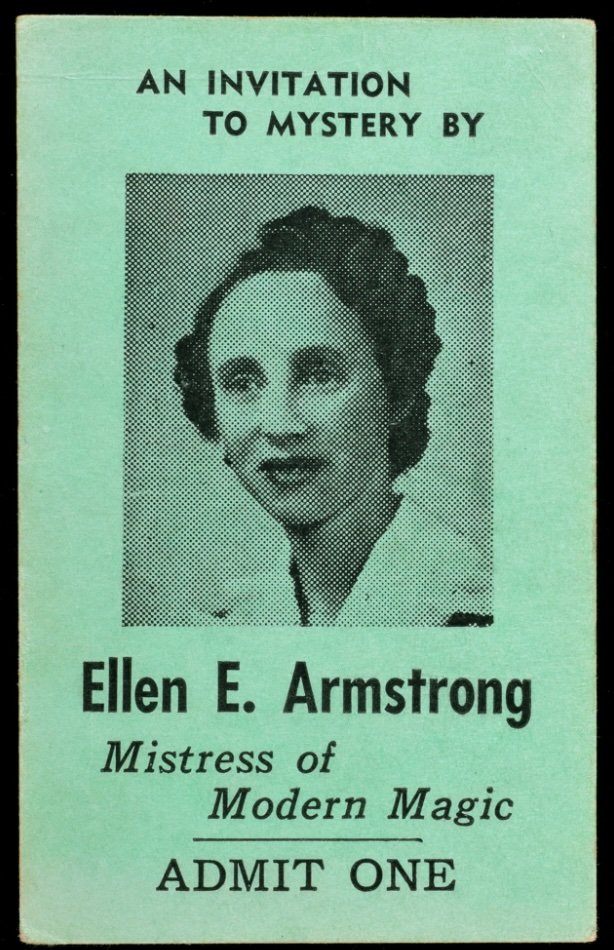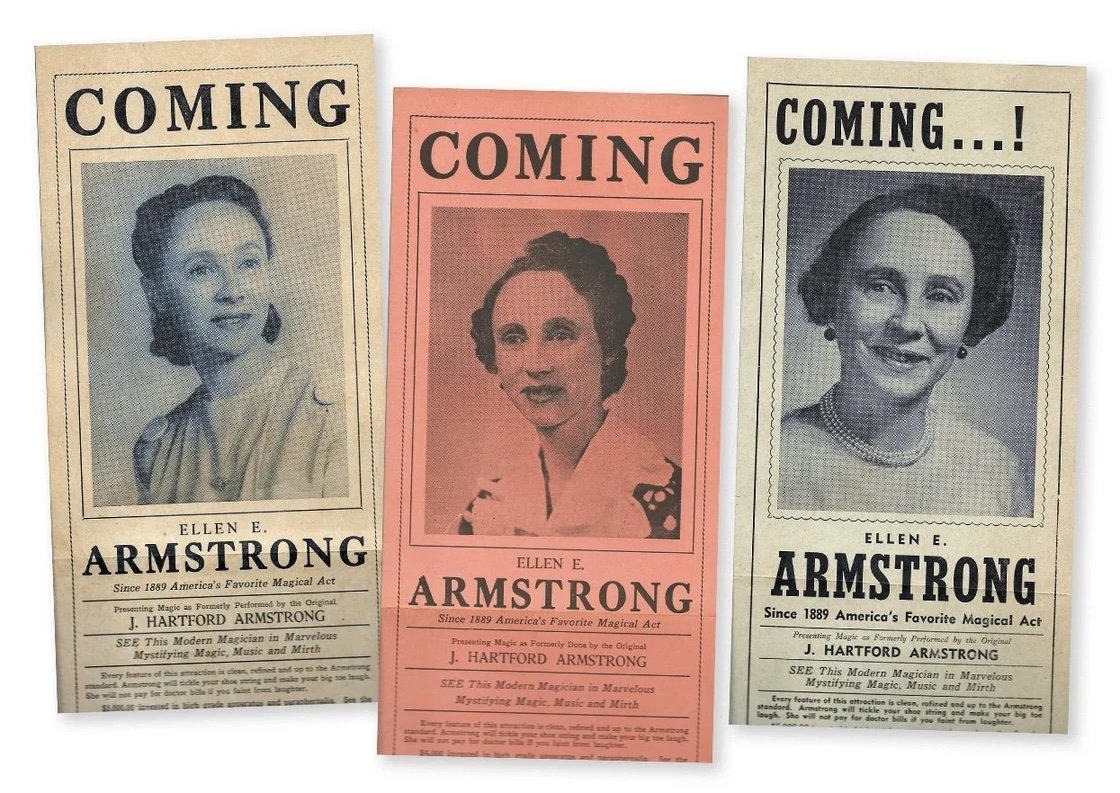Ellen E. Armstrong, who redefined “Black girl magic” before it began.
Ellen Armstrong (1904–1994) was a magician who performed for nearly her entire life. She was the only Black woman of the early to mid-twentieth century to run an independent touring magic show.
A photograph of a ticket used for entry to Ellen Armstrong's magic show. The ticket has a large, black and white photo of Armstrong surrounded by the words "An Invitation to Mystery by Ellen E. Armstrong Mistress of Modern Magic - Admit One". Photo Source: magictricks.com
Ellen Armstrong was born on December 27, 1904 into the world of magic. Her father, J. Hartford Armstrong, was already a famous magician—one of the few male Black magicians of his time. He performed with his brother and later with his wife. When Ellen was as young as six she joined them on stage, and they performed together as “The Celebrated Armstrong.” When her father passed away in 1939, Ellen adopted his show and stepped into the lead role, performing and traveling with her stepmother up and down the southern East Coast.
This was during the Jim Crow era, a time when states legalized racial segregation. It was especially difficult for Black people to travel during this time, as discriminatory laws changed by region, and some areas were far less sympathetic to Black people passing through than others. There were many sundown towns: all-white communities, neighborhoods, or counties that would only allow Black people during the daytime (Blackpast). This meant that in some areas where performers like Ellen performed, they could host a show but weren’t allowed to stay the night. The Green Book, first published in 1936, quickly became “the bible of Black travel" by providing Black travelers with a list of restaurants, gas stations, and lodging that would accommodate them (Library of Congress).
A recreation of a sign on a Southern city limits that says "WHITES ONLY WITHIN CITY LIMITS AFTER DARK". Photo Source: California State University
Nevertheless, Ellen persisted. She traveled for the next thirty years, performing for predominantly Black audiences in the U.S. Her shows incorporated humor, coin magic, cartoons, and mentalism. Her touring posters were humorous and light-hearted. She performed in churches, schools and other community venues that connected her intimately with her audience (Magicana).
Ellen Armstrong died on March 21, 1994, at the age of 88. In “A Little Devil in America,” Hanif Abdurraqib remembers that “magic relies on what a viewer is willing to see, and what a viewer is willing to see relies on what the world has afforded them to be witness to.” We can only imagine what it was like to witness Black girl magic during a time when a Black woman magician felt impossible.
One image depicting three of Ellen Armstrongs broadsides, or posters used to promote upcoming shows. Each depict her at different ages, and each have the word "Coming" on the top followed by information about Ellen Armstrong and her show. Photo Source: Magicana
Today, the idea of Black girl magic is shrouded in its own smoke and mirrors. Black women are only celebrated when they’ve achieved feats that seem near impossible, made so by the misogynoir we experience every day. The forced resignation of Dr. Claudine Gay from Harvard, the death by suicide of Antoinette Candia-Bailey, and the emotional video by Taraji P. Henson on discrimination in the entertainment industry are reminders that even when we “make it,” we’re rarely safe.
It’s no surprise that there are so few Black women in magic today. Our magic is questioned and challenged in every profession, and we’re not made to feel safe to chase our dreams. Believing that anyone can be a magician means honoring their inherent magic—beyond the awards, accomplishments, and achievements.


